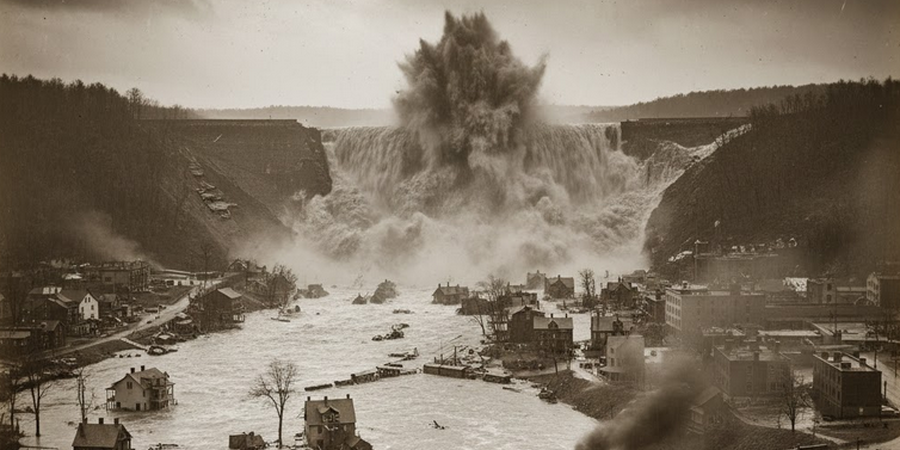PENNSYLVANIA - Pennsylvania, crisscrossed by major rivers like the Susquehanna, Delaware, and Allegheny, has a long and often tragic history of devastating floods. From localized flash floods to widespread deluges, these events have shaped its communities and infrastructure. However, one flood stands out as the most calamitous in the Commonwealth's history, not only for its sheer destructive power but for the immense loss of life it inflicted: The Johnstown Flood of 1889.
The Johnstown Flood of 1889: A Disaster of Unprecedented Scale
The Johnstown Flood was not just a natural disaster; it was a man-made catastrophe waiting to happen. It occurred on May 31, 1889, when the South Fork Dam, an earthen dam located on the Little Conemaugh River 14 miles upstream from the city of Johnstown, failed after days of hefty rainfall.
-
The Cause: The South Fork Dam, initially built for the Pennsylvania Main Line Canal, had been poorly maintained and significantly altered after being sold to the South Fork Fishing and Hunting Club. Crucial spillway modifications were never completed, and its height was lowered, reducing its capacity to handle floodwaters. Heavy rains swelled the Lake Conemaugh reservoir to dangerous levels.
-
The Cataclysm: At approximately 3:10 PM, the dam collapsed. An estimated 20 million tons of water (roughly equivalent to the volume of Niagara Falls) was unleashed in a monstrous wave, sweeping down the valley at speeds estimated between 40 and 60 miles per hour.
-
The Devastation: The 70-foot-high wall of water, picking up debris, houses, trees, and even trains, barreled towards Johnstown. It utterly obliterated everything in its path, including the towns of South Fork, Mineral Point, East Conemaugh, and Woodvale, before slamming into Johnstown itself. The impact was so immense that it momentarily reversed the flow of the Stonycreek River and scoured the valley down to bedrock.
-
The Aftermath: The flood transformed Johnstown into a wasteland of tangled wreckage and mud. A massive pile of debris, nearly 40 acres in size and 30 feet high, accumulated against the Stone Bridge, igniting an enormous fire that incinerated many who were trapped within the wreckage.
Unparalleled Loss of Life and Property
The human toll of the Johnstown Flood remains staggering, making it the deadliest flood in U.S. history and one of the deadliest single incidents in Pennsylvania's past.
- Fatalities: 2,209 people lost their lives, including 99 entire families and 396 children under the age of 10. Many bodies were never recovered or identified.
- Injuries: Thousands were injured, many severely.
- Property Damage: Over 1,600 homes were destroyed, along with numerous businesses, factories, and entire communities. The economic impact was catastrophic for the region.
- National Response: The disaster galvanized the nation. The newly formed American Red Cross, led by Clara Barton, undertook its first major disaster relief effort, establishing hospitals and aid stations.
A Lasting Legacy



